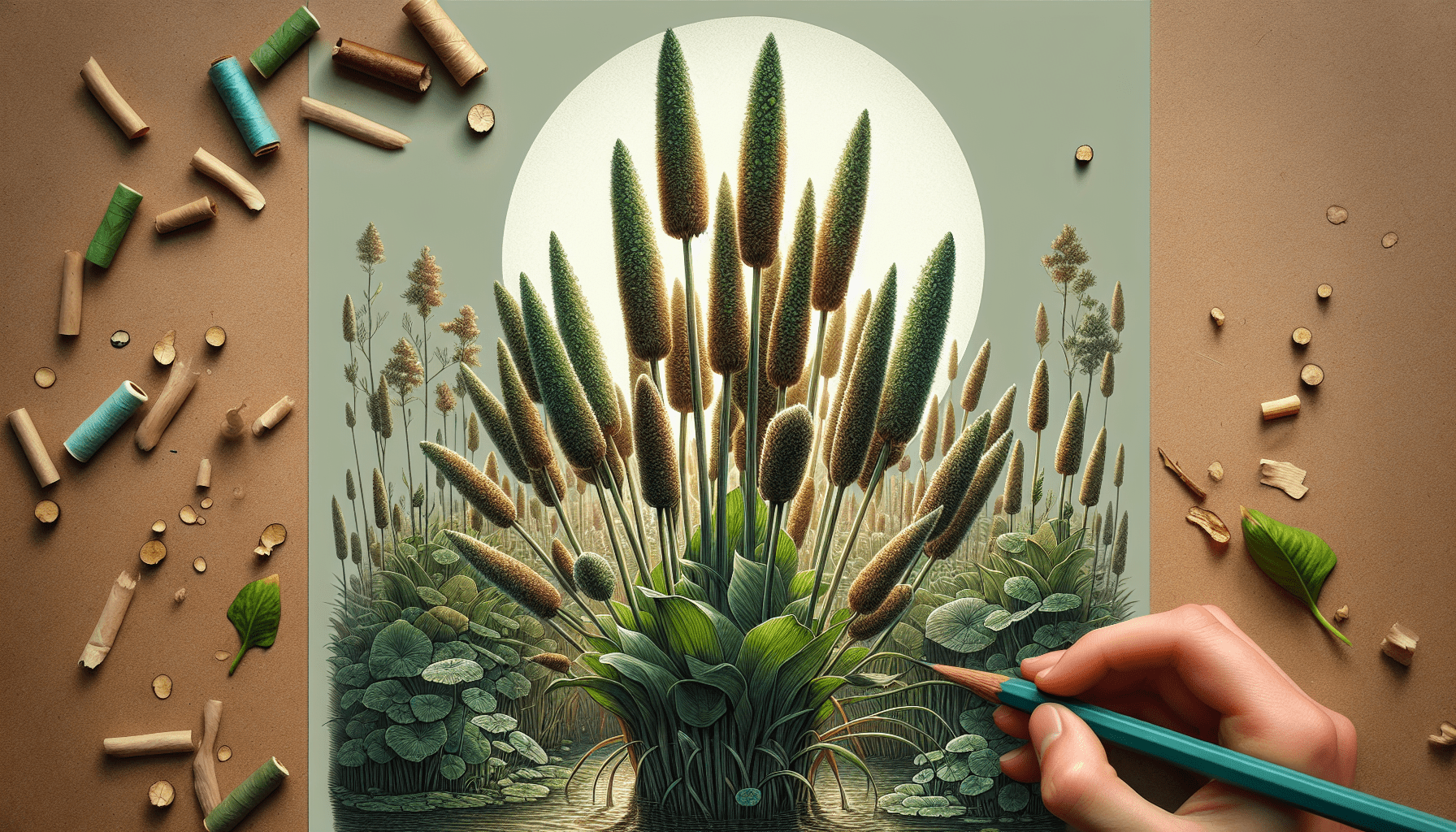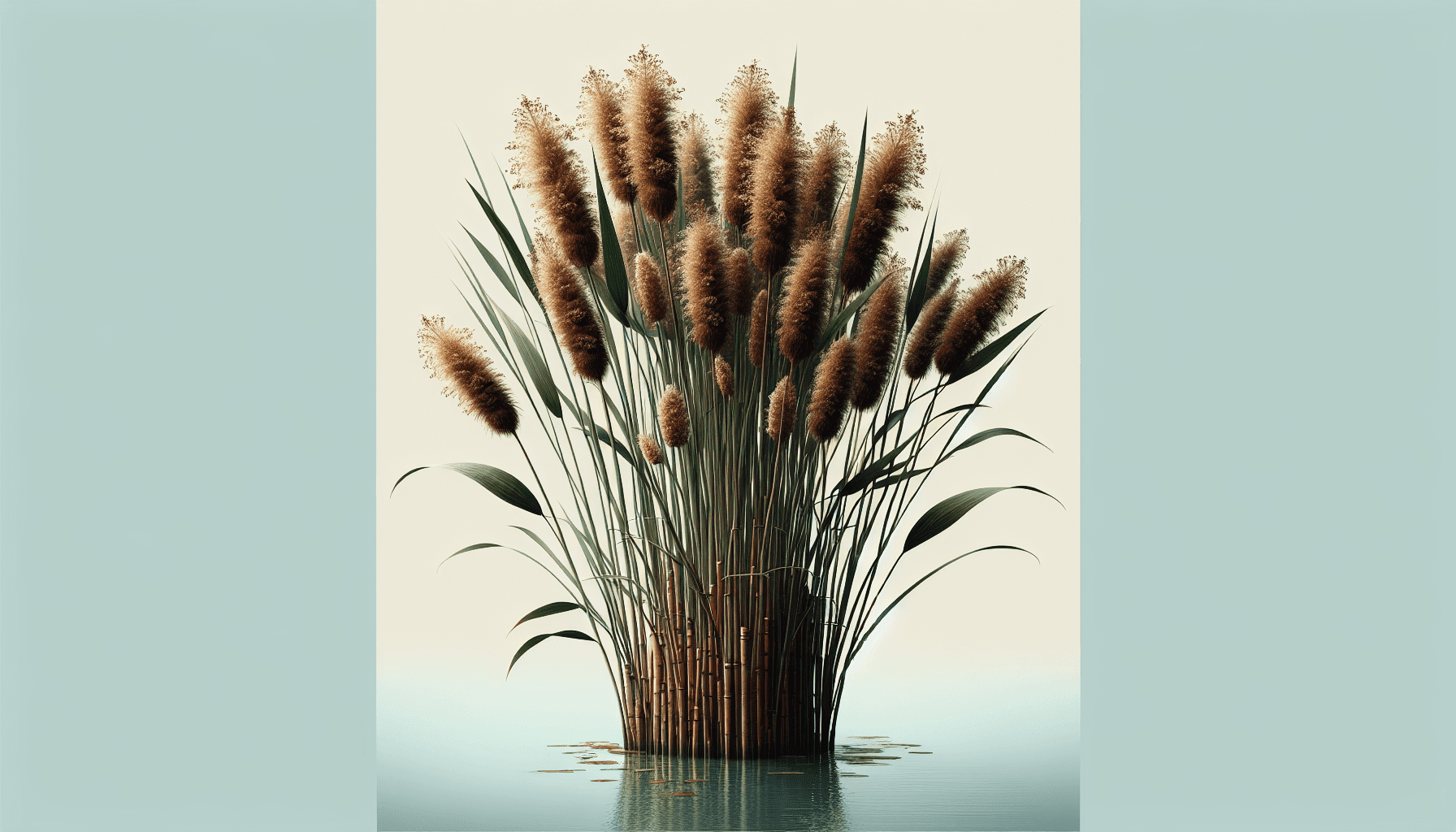Your journey into the world of aquatic botany is about to take an intriguing twist as this article unveils the wonders of the Water Bulrush. This distinct aquatic plant, renowned for its proximity to water bodies and unique survival capabilities, is indeed a marvel to behold. The article meticulously unravels the distinctive features of the Water Bulrush, its environmental impact, survival strategies, and overall contribution to its surrounding ecosystem. A detailed understanding of this unique plant awaits you, offering an enriching excursion through the realm of aquatic vegetation.

Overview of Water Bulrush
Water Bulrush, also known as Softstem Bulrush or Schoenoplectus tabernaemontani, is a perennial aquatic plant known for its tufted reed-like appearance and its robust structure that can withstand a variety of environmental conditions. A prominent component of the freshwater ecosystem, water bulrush provides significant ecological functions and carries both historical and medicinal importance for humans.
Scientific classification of water bulrush
The Water Bulrush belongs to the Cyperaceae, or sedge family. Its full scientific classification is as follows: Kingdom – Plantae, Order – Poales, Family – Cyperaceae, Genus – Schoenoplectus, Species – S. tabernaemontani. As the taxonomy implies, it shares common characteristics with other members of the sedge family.
Common locations of water bulrush
This vigorous species inhabits freshwater ecosystems globally, with a prevalence in North America, Europe, and Asia. They thrive in wetland habitats like marshes, ponds, lakes, and riverbanks where they often form dense, mono-species stands.
General description of water bulrush
Water Bulrushes are often characterized by their stiff, upright cylindrical stems, and slender, grass-like leaves. They can grow to be quite tall, often towering above the water surface, and produce small, brownish flowers.
Growth and Lifespan of Water Bulrush
Water Bulrush goes through a perennial lifecycle, meaning it persists year after year, growing back from its roots after winter.
Life cycle of water bulrush
The plant initiates growth in early spring, with shoots emerging from the perennial rhizomes underground. Come summer, it flowers and then develops seeds which mature by the end of summer or the onset of fall. As winter approaches, the above-ground parts of the plant will die back, but it’s rhizomes persist establishing a repetitive growth cycle.
Growth rate and maximum size
The water bulrush grows relatively rapidly given appropriate conditions. Most bullrushes can reach a height of up to 10 feet or more. The size significantly depends on the environmental stipulations like water availability, light conditions, and nutrition content in the soil.
The typical lifespan of bulrushes
Being perennials, bullrushes can endure for several years. They survive by developing extensive root systems that allow them to endure harsh winters or dry seasons. Their exact lifespan can vary depending on specific environmental conditions, including the presence of pests and disease.
Habitat Requirements for Water Bulrush
Adaptable and hardy, the water bulrush is not overly selective about its habitat. However, some conditions lead to optimal growth.
Preferred water conditions
Bullrushes grow best in quiet, still or slow-moving freshwater bodies and can survive in water depths up to 1 meter. High nutrient availability in water also encourages their growth.
Soil suitability
Loamy to clayey soils that are waterlogged or at least very moist suit this sedge best. Even though the water bulrush can sometimes survive in drier ground, it thrives in water-saturated environments.
Light exposure and temperature needs
Full sun to partially shaded locations are preferred by the water bulrush. It can endure a wide range of temperatures but thrives ideally in moderate climates.

Morphological Characteristics of Water Bulrush
Bulrushes exhibit particular physical features that enable their survival in aquatic environments.
Structural adaptations of water bulrush
Key adaptations include rhizomatous growth that provides stability in the water-saturated ground and air-filled hollow stems, known as aerenchyma, that enable oxygen transport to submerged roots.
Description of leaves, stems, flowers, and roots
Water bulrushes feature triangular, smooth stems that can be green or brownish, and long, narrow, grass-like leaves. The small, unobtrusive flowers are brownish and grow in dense clusters. Their fibrous roots are often deep and extensive.
Differences between water bulrush and similar species
While there might be similarities between bulrushes and reeds or rushes, important differences include the triangular (not round) stems in bulrushes, and their unique flowering structure.
Reproduction and Seed Dispersal
Water Bulrush shows vegetative and sexual reproduction strategies that contribute to its widespread occurrence.
Sexual and asexual reproduction modes
The plant reproduces both sexually through seeds and asexually via rhizomes. The latter bestows it with the capability to colonize large areas rapidly as the rhizomes grow and spread easily in the moist soil.
The role of wind and water in seed dispersal
Seeds, once developed, are often dispersed by water currents or by wind, which carries them to their new cultivation sites. The seeds can also stick to the fur of animals, thereby facilitating further dispersal.
The effect of environmental conditions on reproduction
Environmental factors such as temperature, water availability, and photoperiod can influence the reproductive success of bulrush. For instance, extreme temperatures may inhibit seed germination, while ample water sources aid in seed dispersal.
Ecological Role of Water Bulrush
Water bulrush plays a considerable role in ecosystem health and functioning.
Value for wildlife and ecosystem
Bulrushes offer valuable habitats and food sources for various wildlife, especially birds and aquatic animals. Additionally, they manage erosion by stabilizing soil with their extensive root systems.
Bulrushes as bioindicators
The presence of water bulrush can indicate high nutrient levels in the water. They have been used as bioindicators of eutrophication, an ecological phenomenon where an excess of nutrients in bodies of water leads to an explosion of plant growth, primarily algae.
Environmental threats and protection status
While not endangered, the water bulrush population can be threatened by habitat destruction, drainage for land development, and pollution. Conservation efforts are necessary to protect these beneficial plants.
Water Bulrush in Human History and Culture
Throughout history, bulrushes have held practical uses and symbolic meanings for various civilizations.
Historical uses of bulrushes
Historically, bulrushes have been used for making various items, including mats, baskets, and even shoes due to their robust structure. They’ve also served as a food source in some communities.
Symbolic meanings in different cultures
In various cultures, bulrushes symbolize endurance and flexibility given their ability to thrive in challenging conditions. They have often been featured in mythology and folklore.
Depictions in art and literature
Bulrushes grace art and literature pieces, often portrayed as a symbol of perseverance and tranquility. Their unique, towering reed-like appearance evokes a sense of serenity, often portrayed in landscapes and pastoral poetry.
Commercial and Medicinal Uses of Water Bulrush
Beyond its ecological and cultural significance, water bulrush also presents commercial and medicinal prospects.
Use in traditional medicine
In traditional medicinal practices, various parts of the water bulrush plant have been used to treat ailments like inflammation, rheumatism and wounds.
Applications in industry and agriculture
Commercially, bulrushes are attractive for their potential applications in industry and agriculture. They are used for erosion control, wastewater treatment, and even in the paper industry.
Potential for bioremediation
As they can absorb excessive nutrients from the water, Water bulrushes present opportunities for biological remediation, playing a vital role in conservation and restoration efforts.
Cultivation and Propagation of Water Bulrush
Cultivating water bulrush could be relatively straightforward provided the right environment.
Steps to cultivate bulrushes
They can be propagated both by seeds or vegetatively via dividing the rhizomes. Once the seeds or rhizome pieces are planted in suitable soil and water conditions, growth can be expected with proper care and attention.
Choice of location and preparation of planting area
Typically, water bulrush prefers full sun to partially shaded areas and soil that is loamy and consistently saturated with water. For successful cultivation, preparing the right kind of environment is crucial.
Maintenance and care for a healthy growth
Water bulrush generally requires minimal maintenance. However ensuring a consistent water source and regular inspection for any signs of disease or pest infestations is conducive to its success.
Pest and Disease Control for Water Bulrush
Like all other plants, Water Bulrush can be affected by certain pests and diseases, which may need to be managed for a successful growth.
Common diseases and pests affecting water bulrush
Occasionally, water bulrush may be affected by fungal infections or grazed upon by pests such as aphids.
Preventive measures and treatment options
Timely detection and treatment using appropriate fungicide or pesticide can manage these issues. You may also consider preventative measures such as using disease-free seeds or rhizomes for planting.
Impact of poor health on the plant’s lifespan and ecological role
Undoubtedly, poor health can impact the plant’s lifespan and hinder its ecological contributions. Consequently, keeping a keen eye out for any signs of stress or disease is crucial to preserving these key ecological assets.
